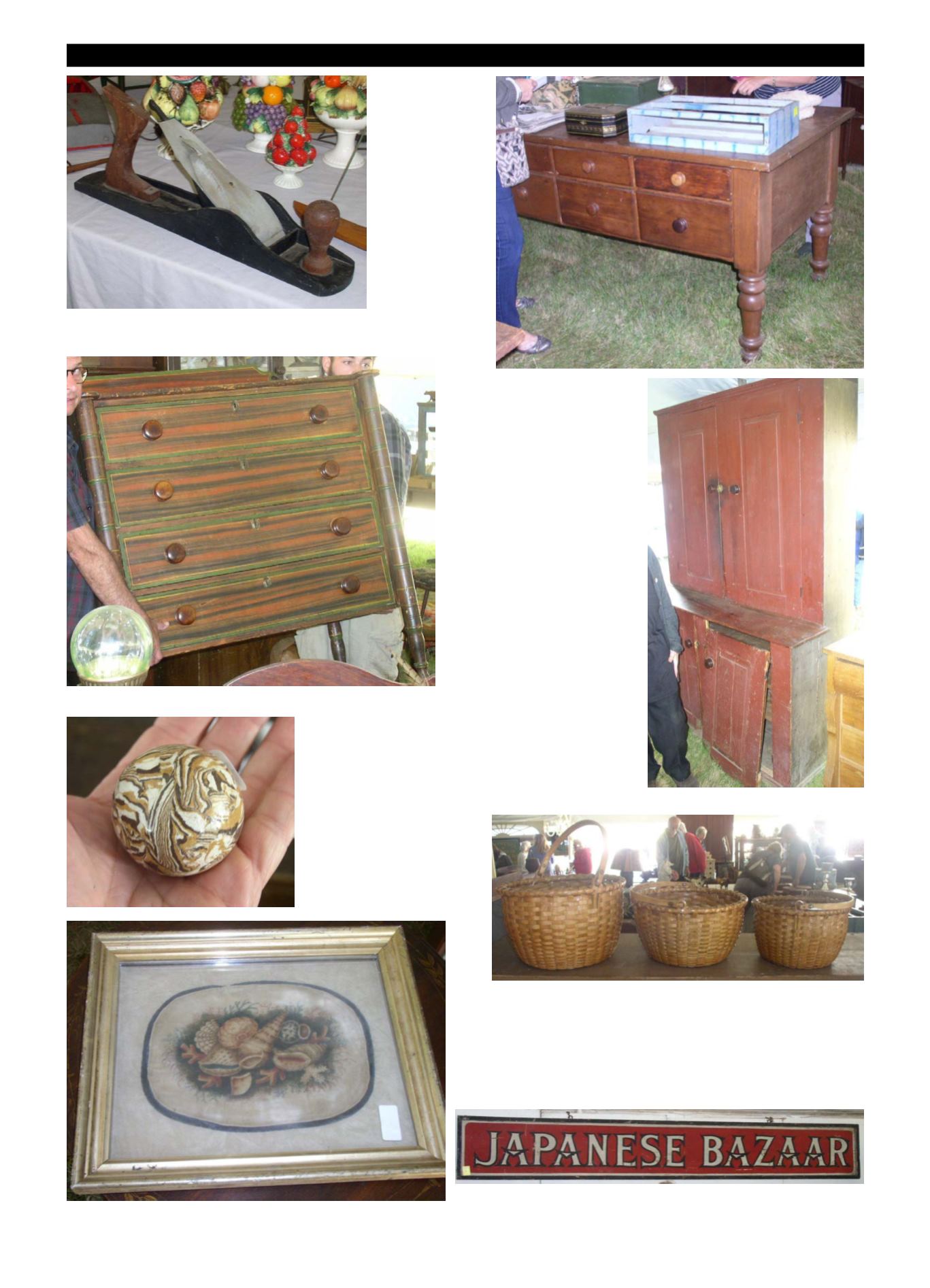

Maine Antique Digest, December 2016 13-E
-
AUCTION -
13-E
The oversize wooden plane, probably used as a store or cabinetry
shop display, headed out at $176.
This heavy worktable
came from F.O. Bailey of
Portland, one of Maine’s
oldest companies. With
drawers on both sides
and one or two replaced
knobs, it brought $1980.
The red-painted cupboard with
four raised-panel blind doors and
wooden knobs is in need of just a
little TLC, but nothing serious. It
had been sitting in Nan’s house,
untouched, for about 40 years. It
made $1870.
This cookie-corner chest is
decorated with brown and ocher
graining surrounded by green
and yellow borders with bamboo-
like painted rings on the corner
columns—practically a signature
decoration for the Paris, Maine,
area. It sold for $1045.
Although they are unsigned, these baskets are believed to have been made in the late
19th and early 20th centuries by Albra Lord, who lived and worked in Lovell, Maine,
about 30 miles north of Parsonsfield. They have Lord’s recognizable rivets fastening
the handles to the bodies and the slightly bulbous barrel shape that characterizes most
of his work. The attribution looked solid, but I didn’t notice the distinct impression
on the bottom that also helps identify his work. All three baskets sold as one lot for a
bargain $330. Josh Gurley was confident that the Lord attribution was accurate. Lord
also had a characteristic way of tying off his final rim wrap, he added.
No one was sure where this hanging double-sided red, black, and white trade sign came from.
Someone suggested San Francisco, but there was nothing definite. It brought $1760.
Housed in a gilded wooden frame, this theorem-decorated bag face picturing various
corals and shells on a bed of green sold for $825.
Auctioneer Josh Gurley described
this large (1
⅞
" diameter) marble as
a “mocha scrottle” ball. “Sort of an
end-of-day piece,” he suggested. Josh
recalled, “That’s what Mom called it,
so that’s what we went with.” I drew
a complete blank when I looked up
the term “scrottle,” but “scroddled”
objects are made from wedged pieces
of clay of different colors. Whatever
it is was called, it sold for $330.











